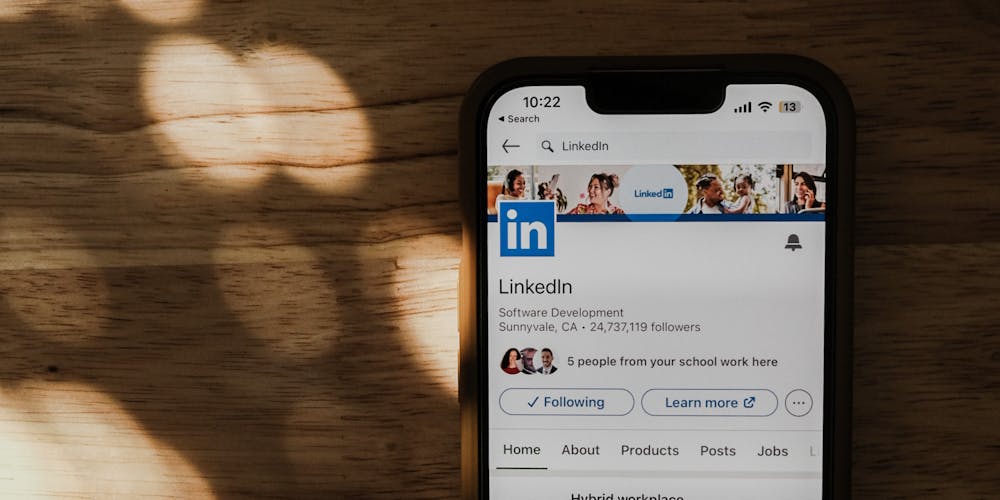Are you looking for strategies to find and convert your ideal prospects? Are you taking full advantage of LinkedIn? In this article, you’ll discover proven tactics to identify your target audience, craft compelling messages, and guide prospects through your sales funnel on LinkedIn. LinkedIn has emerged as one of the most powerful platforms for businesses and marketers seeking to connect with their ideal prospects and drive sales.
Why Should Marketers Focus on LinkedIn for Sales?
LinkedIn expert and host of the Young and Profiting podcast, Hala Taha, shares her valuable insights on harnessing the power of LinkedIn to increase your sales. She says the platform offers distinct advantages for marketers and sales professionals looking to find qualified leads. LinkedIn users tend to have significant purchasing power, with the average user earning over $75,000 annually, and many are in their peak earning and buying years between ages 25 and 55.
Unlike other social media platforms focused on entertainment or socializing, people come to LinkedIn ready to engage in business conversations and find solutions to their problems. This level of professionalism makes LinkedIn users more receptive to sales outreach. Additionally, with only 5.2% of LinkedIn’s 135 million daily active users creating original content, there’s far less noise to cut through, making well-crafted content more likely to reach its target audience.
How LinkedIn Has Evolved (and What It Means for You)
LinkedIn’s algorithm has shifted from prioritizing engagement probability to prioritizing interest relevancy. This move takes LinkedIn from merely maximizing user engagement, similar to other social media platforms, to focusing on maintaining user interest by showing content that aligns with their stated interests and behaviors. Engagement probability centers around keeping users engaged on the site to maximize ad revenue.
Interest relevancy, however, shows users content that matches their interests, even if it’s older. LinkedIn builds an “interest graph” for each user to map the topics and subtopics they engage with most. By understanding these interests, LinkedIn can surface content more likely to resonate with them. Human editors also review content to ensure it fits LinkedIn’s professional brand, focusing on career development, hiring, and entrepreneurship. This editorial approach aligns with LinkedIn’s Talent Solutions business model, which positions the platform as a premier recruiting tool while ensuring users see professionally relevant content.
How to Use LinkedIn for Sales
Target Your Ideal Prospects Through Searchable Attributes and Behaviors
LinkedIn’s advanced search functionality is one of its superpowers, allowing you to identify and connect with your target audience at scale. By utilizing multiple criteria and keywords, you can pinpoint individuals who fit your ideal customer profile. For instance, search filters enable you to look for people by job title, company, location, past companies, and educational background.
Once you have a list of prospects, you can connect and build relationships with them. LinkedIn Groups offer another way to find potential customers engaged in industry-relevant conversations. These online communities are rich with insights and discussion topics that allow you to demonstrate your expertise and build credibility. Furthermore, identifying “lookalike” profiles—people who closely resemble your best customers or industry influencers—can help you find more individuals likely to be interested in your products or services.
Pull Your Ideal Prospects Into Your Network
After identifying your prospects, the next step is to send personalized connection requests that show relevance and establish common ground. Whether reaching out to 2nd or 3rd-degree connections, make your messages personalized and avoid generic templates. Call out shared interests, group memberships, and any impressive aspects of their profiles to increase your chances of a successful connection.
A good practice is to follow influencers similar to your target audience. For instance, if you want to reach marketing entrepreneurs, you might look for those who engage with Gary Vaynerchuk’s content. By reaching out to these individuals with messages highlighting mutual interests, you can attract followers who are already engaged with similar content. Once connected, direct messaging (DM) becomes essential. Providing value through useful resources and initiating meaningful conversations can help move your connections through the sales funnel.
Leading Your Connections Through the Sales Funnel
From identifying the right audience using LinkedIn’s advanced filters to creating engaging content that resonates with potential customers, there are numerous tactics that can enhance your prospecting efforts. LinkedIn’s features such as InMail provide direct communication channels, helping you forge stronger connections. By optimizing your profile to reflect your brand’s values and consistently sharing valuable insights, you can build a robust LinkedIn presence. These strategies not only improve your visibility but also establish you as a thought leader in your industry, ultimately driving more qualified leads into your sales funnel.

